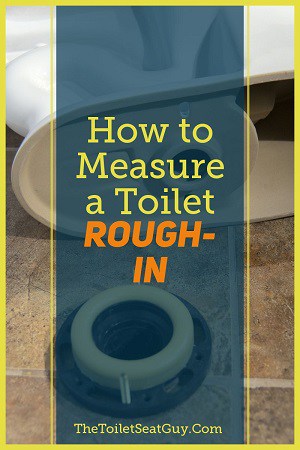 Replacing an old toilet and installing a new one, can be a tricky job if you are unaware of what goes on at the base of the toilet. A toilet rough-in, is the hole that connects the base of the toilet to the drainage pipe. This nifty combination provides a way for waste water to leave a house in a safe manner. Of course, it is important that the rough-in and the drainage pipe are aligned correctly. Although the process of connecting the two sounds pretty straight forward, it can get really messy, and damp, if you do not know how to measure a toilet rough-in. You may also need to measure other areas around the toilet, to make sure the toilet is installed correctly.
Replacing an old toilet and installing a new one, can be a tricky job if you are unaware of what goes on at the base of the toilet. A toilet rough-in, is the hole that connects the base of the toilet to the drainage pipe. This nifty combination provides a way for waste water to leave a house in a safe manner. Of course, it is important that the rough-in and the drainage pipe are aligned correctly. Although the process of connecting the two sounds pretty straight forward, it can get really messy, and damp, if you do not know how to measure a toilet rough-in. You may also need to measure other areas around the toilet, to make sure the toilet is installed correctly.
To accomplish this, the first step is to determine the following measurements.
- Total space between the flange and the wall
- Distance from toilet to water valve
- Space on either side of the toilet
- Available area in front of the bowl
Measuring a Rough-in Correctly
In case you are unfamiliar with what a flange is, it is the object placed on top of the drainage pipe and works as a guide to ensure waste water goes into the drainage pipe, rather than beneath the floor. When measuring the distance between the flange and the wall behind the toilet, make sure to take your measurement from the center.
This can be either the dead center of the drainage pipe or the flange itself, as the flange typically makes it easier to estimate where the middle of the rough-in is. Make sure to measure from the “wall” to the center of the rough-in and not from the skirting board. That said, the standard rough-in is approximately 12-inches, however, there are exceptions to this. For example, if you are remodeling an older home, you may encounter either a 10-inch or a 14-inch rough in.
Once you have this information, you can use the data to quickly eliminate toilet selections, as they typically come with a guide outlining the distance between the back of the toilet tank and the center of the toilet base (rough-in measurement).
Other Measurements
At this point, instead of asking how to measure a toilet rough-in, you may find yourself wondering why you need the additional measurements. After all, as long as the waste water goes where it is supposed to, who cares. Right?
Unfortunately, the process is not that cut and dry. When replacing or putting in a new toilet, there are several issues that may arise and have an effect on your toilet installation. Let’s start with the water valve.
Water Valve
In general, the incoming water fixture will be on the wall behind the toilet. You will need a suitable water supply line to connect the water valve to the tank. You neither want a supply line too long nor too short for this, therefore measuring your old water supply tube will give you a good idea of the correct length needed.
Distance on Either Side
Once this issue is addressed, it is time to measure the area around the toilet. In a perfect world, there would be at least 15-inches of space from the center of the flange to both the left, and the right. And although this may not be practical in all situations, it is worth mentioning considering it will be harder to take this measurement after the toilet is installed.
Front of the Toilet
As for the space in front of the toilet, this is more a code violation that could lower the value of your house, rather than just a spacial preference.
See, depending on your area, there are two types of plumbing code related, here. The International Plumbing Code, or IPC, and the Uniform Plumbing Code, or UPC. Homes that fall under the IPC are required to have at least 21-inches of unused space in front of the toilet, whereas the UPC bare minimum is 24-inches.
To find out if your home falls under IPC, UPC, or state regulations, go here.
That said, here is a quick recap on how to measure a toilet rough-in.
- Measure the distance between the center of the drainage pipe, or preferably the flange, to the wall.
- Make sure to measure the distance from the wall (not the skirting board) to the center of the flange.
- Look for a toilet matching the distance.
- Measure the distance between the water valve and the tank connection point to get the ideal water supply tube length for your toilet. Not too long or too short is ideal and measuring your old water supply tube is a good guide.
- Follow local plumbing codes in regards to space around the toilet, specifically in the front, to ensure everything is in order if you opt to sell your home later on.
As said earlier, the most common rough-in measurement is a 12-inch rough-in. However, your house may have a 10 or a 14-inch rough-in. You will have to purchase a toilet with the correct measurement to make sure it fits correctly.
Hopefully, this article on How to Measure a Toilet Rough-in was helpful and you can now easily find the correct rough-in measurement for your new toilet.






